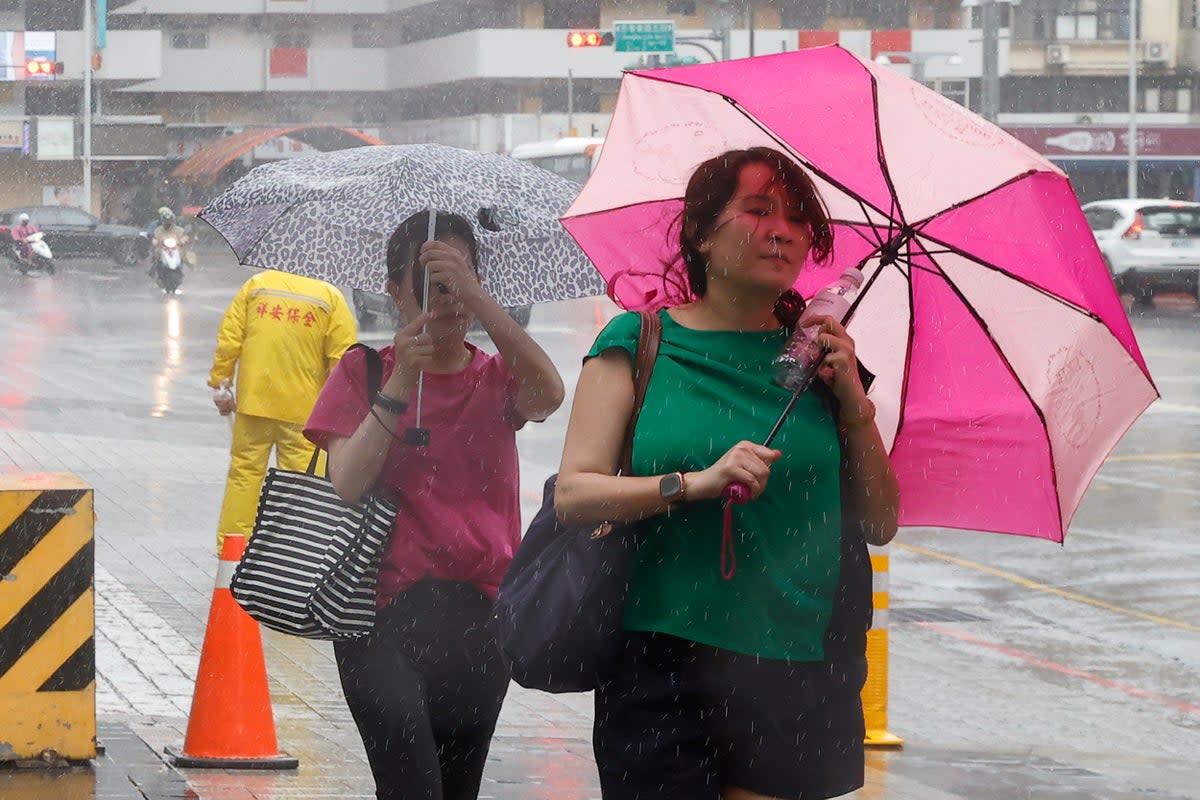Typhoon Haikui: Taiwan hit by 100mph gusts as thousands evacuated and flights cancelled

Thousands of people have been evacuated and several villages have been left without power as Typhoon Haikui struck Taiwan, the first tropical storm to make a direct landfall on the island in over four years.
The typhoon made landfall in Taiwan on Sunday afternoon in the mountainous and sparsely populated far southeast with maximum sustained winds of 137 kph (85 mph) and gusts up to 173 kph (107 mph).
The typhoon brought heavy rain and disruptive winds which impacted transport services and cut off roads and mobile connectivity.
In preparation for Haikui, Taiwan had suspended flights, rail transport and ferry services along with classes and outdoor events, as officials urged workers to stay home.
Approximately 4,000 people were evacuated and people were asked to stay away from the sea and not to leave their homes unless necessary.
Taiwanese airlines cancelled all domestic flights on Sunday, while ferry services to surrounding islands were also suspended.
There was less disruption to international flights, with only 41 cancelled for Sunday, the Civil Aeronautics Administration said.
As of early on Sunday evening only two people had been reported slightly injured, after a tree fell on a truck in the eastern county of Hualien. There were few other reports of damage.
The typhoon moved along the Chinese coast and is expected to continue on toward China after crossing over Taiwan, as authorities in the Chinese city of Shantou in Guangdong province were advising residents to take precautions.
In the eyewall of #typhoon #haikui in Chenggong #Taiwan pic.twitter.com/yE9TbzwUqO
— James Reynolds (@EarthUncutTV) September 3, 2023
Compared to Typhoon Saola, which struck Hong Kong and the southern Chinese province of Guangdong on Saturday, Haikui is significantly less powerful. According to Tropical Storm Risk, Haikui was projected to be categorised as only a Category 1 or 2 typhoon when it makes landfall in Taiwan.
Because of Saola, workers in a number of Chinese cities were already staying at home and students saw the start of their school year postponed from Friday to Monday.
Trading on Hong Kong’s stock market was suspended on Friday and hundreds of people were stranded at the airport after about 460 flights were cancelled in the key regional business and travel hub.
Typhoon #Haikui is barreling toward #Taiwan with winds of 165 km/h. Landfall near Taitung in the next few hours. pic.twitter.com/XGN8oz22tB
— Zoom Earth (@zoom_earth) September 2, 2023
Despite the twin storms China’s military continued to conduct operations meant to intimidate Taiwan, a self-ruled democracy that Beijing seeks to bring under Chinese sovereignty by force if necessary.
Taiwan’s defence ministry said it was monitoring the movements of Chinese military aircraft and navy ships near the island. However, it said there were no indications any had crossed the median line in the Taiwan Strait or entered Taiwan’s air defence identification zone as they frequently do.
Additional reporting by agencies

